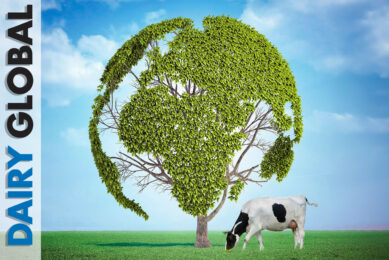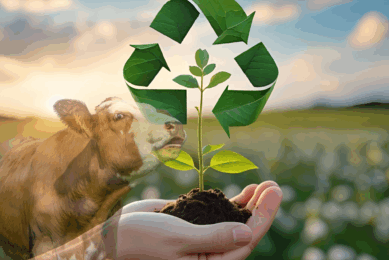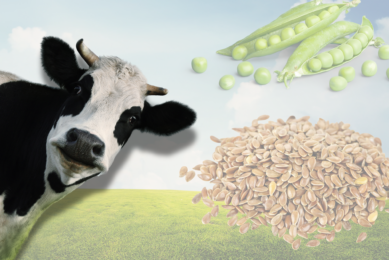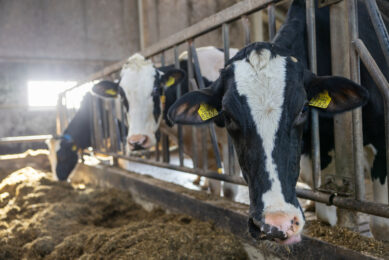Red seaweed as a feed additive stops methane production
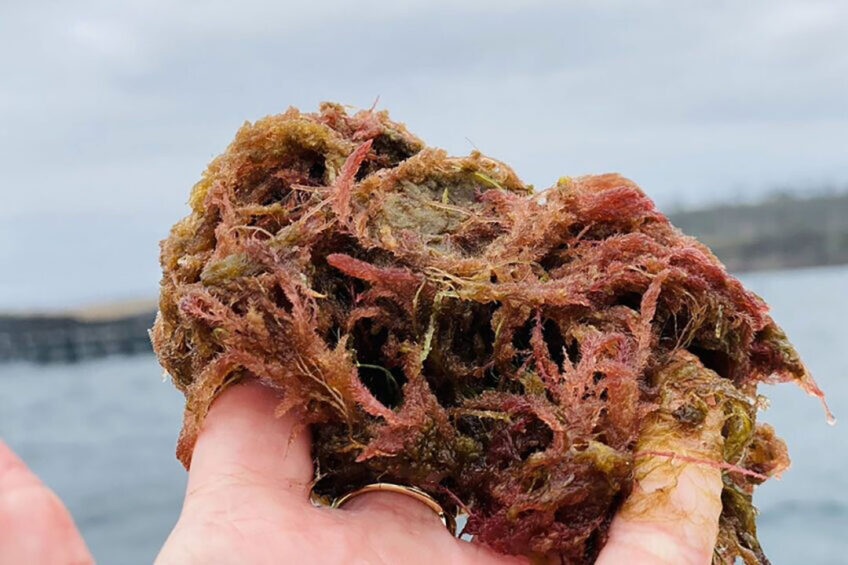
2 research groups are now scaling up for the commercial launch of this cattle feed additive, one that has been shown to almost completely stop methane production.
With concern over climate change reaching unprecedented levels, a feed additive that causes a huge reduction in methane production by cows is both exciting and extremely welcome.
Prevents hydrogen from binding to carbon atoms
Methane, of course, is one of the worst of the so-called greenhouse gases, and how red seaweed (Asparagopsis sp.) stops methane production by cattle is not complicated. Within the digestive tract, it simply prevents hydrogen from binding to carbon atoms, so that extremely little methane is burped out by cows into the air.
Seaweed: A potential feed for ruminants
According to a study of Norwegian harvested seaweed, in which researches of Aarhus University have participated, using seaweed can be a potential feed for ruminants. Find out more…
Impact of red seaweed in cattle diets
The palatability of red seaweed is good (in any case, it only needs to be fed at a very low level such as 0.5%), and there are no apparent effects on milk and meat quality from including it in the beef or dairy cattle ration. But in addition, it interests producers because red seaweed has also been shown in at least one study to result in the same daily gain by beef cattle fed less than would otherwise be needed for that degree of weight gain.
Studies on beef and dairy cattle
First let’s start with the methane research. Dr Ermias Kebreab recently led a 147-day study at the University of California (Davis) showing that methane reduction from beef cattle fed red seaweed was sustained over the entire trial. Kebreab is Director of the World Food Center at the University and the scientific advisor for US-based Blue Ocean Barns, a company now working to commercialise a red seaweed additive. In another set of short-term studies with lactating dairy cows led by Dr Alexander Hristov (Distinguished Professor of Dairy Nutrition at Penn State University), including red seaweed in the ration reduced methane emissions by 80% with no effect on feed intake or milk yield.
Not all seaweed is suitable as a methane inhibitor
Seaweed can be an effective means of limiting methane emissions in cows, but some methane-inhibiting substances are also poisonous. Read more…
Debating the need for more research
Hristov does not believe that, at this point, there has been “nearly enough” study of whether feeding red seaweed to cattle is effective over the long term in terms of reducing methane emissions. He explains that rumen microbes have been shown to adapt to many types of feed and feed additives, and that many additives have stopped producing an effect at some point after being introduced. He suggests that “a long-term study in dairy cows is a full lactation or at least 105 days. In beef cattle, a long-term study is the full feedlot cycle.” For his part, Kebreab thinks his 147-day study is “sufficient” in terms of establishing long-term effectiveness in beef cattle.
Stability and more
Hristov also believes more study of stability of the active ingredient, bromoforms, is needed. On this topic, Kebreab reports that in his studies, “we used seaweed stored for 3 years in a freezer and it works just fine, so I would think it is stable.” When asked about whether other supplements and seaweeds have been shown to produce similar effects, Kebreab says “the only seaweed species that works is Asparagopsis.” He points to a new paper that compares feed additives done by Australia’s Commonwealth Scientific and Industrial Research Organisation (CSIRO) which confirms this. He also adds, however, that “I would imagine any seaweed that stored bromoform would work.”
Obtaining commercial quantities of the seaweed remains the largest hurdle.
Scaling up at a rapid pace
One group working to commercialise a red seaweed livestock feed additive as soon as possible is FutureFeed, a partnership between CSIRO, Meat and Livestock Australia and James Cook University with funding from various companies. It was created solely to support growth in the use of red seaweed to significantly reduce methane emissions by livestock.
Eve Faulkner, FutureFeed marketing and communications manager, says her organisation expects commercialisation within the next 12 months. “Obtaining commercial quantities of the seaweed remains the largest hurdle,” she explains, and adds that the additive can easily be incorporated in the concentrate of grain fed daily to cows at dairy farms and beef feedlots.
First red seaweed trail approved
Blue Ocean Barns, as mentioned, is a US-based company also working to commercialise a red seaweed feed additive. “We are growing seaweed in both Hawaii and San Diego, and have already begun the process of moving to larger tanks in both locations, explains CEO and co-founder Joan Salwen. “For now, those will be the 2 primary locations for our seaweed production, and we are currently negotiating expanding to on-land farms. We anticipate selling to companies by year-end.” She adds that in January 2021, the first commercial trial of red seaweed in the US was approved. It will be conducted at a dairy farm owned by Albert Straus in Marshall, California, and the additive will be fed to a subset of his herd this summer and fall.
14 TIPS TO CUT AMMONIA EMISSIONS IN DAIRY CATTLE
Feed savings
In their study, Kebreab and his colleagues also found that feeding red seaweed reduced farmers’ feed requirements by 14% with no change in steer weight gain. This basically correlates with a claim from FutureFeed that “approximately 12% of feed is lost as methane emissions.” Neither Kebreab nor Hristov has done any analysis of the cost of including red seaweed in the cattle diet versus the cost savings of potentially feeding less feed. FutureFeed cannot comment on cost savings that might result from feeding red seaweed and Salwen is not aware of any cost-based studies.
However, Salwen says that in terms of her future product, “we’re still working out the exact pricing model and who would pay for it. Our business model is designed to ensure that farmers and ranchers − who are the most squeezed part of the livestock and dairy food chains and are in the best position to be climate heroes − do not have to bear the full cost.”
Join 13,000+ subscribers
Subscribe to our newsletter to stay updated about all the need-to-know content in the dairy sector, two times a week.



